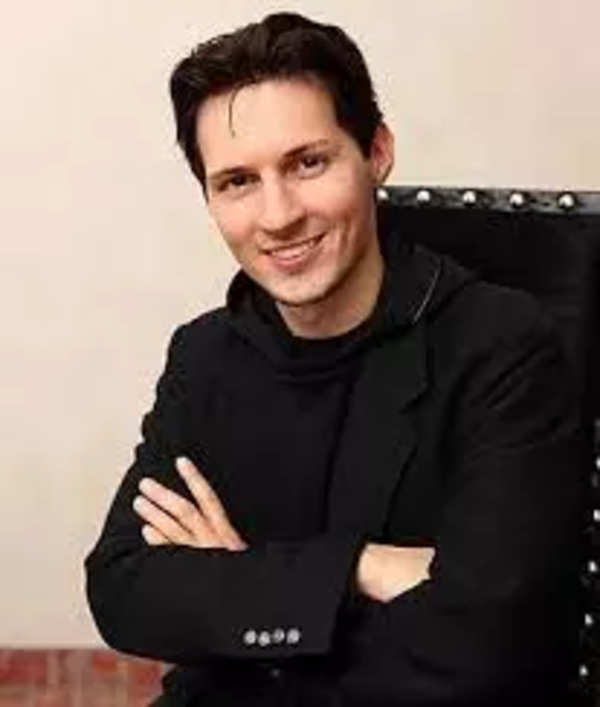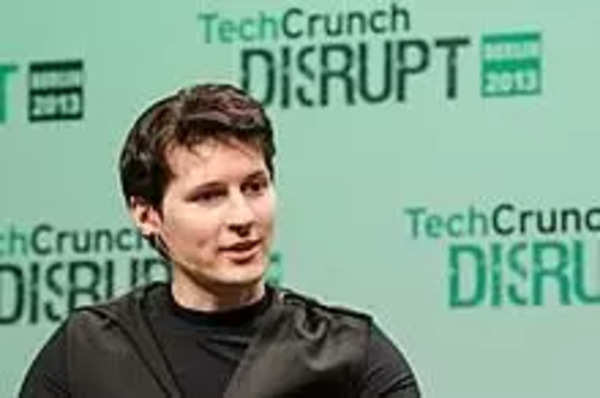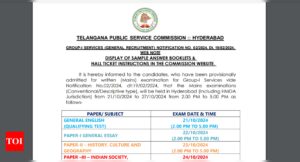He is currently in the limelight, but for all the wrong reasons. Durov was detained on August 24 at France’s Le Bourget Airport over an investigation into criminal activities on the app. He has been released from custody and is now facing potential indictment after being transferred to court for questioning. Here is a glance at his qualification and career trajectory.

Durov’s early life and schooling
Born on October 10, 1984, in Leningrad, then part of the Soviet Union, Pavel Durov was raised in a family steeped in intellectual achievement. His father, Valery Durov, was a distinguished philologist and served as the head of the philology department at St. Petersburg State University. His mother, Albina Durova, was also an esteemed professor at the same institution. This academic environment, coupled with the influence of his older brother Nikolai, who would later become a prominent mathematician and programmer, deeply shaped Pavel’s early life and future ambitions.
Durov’s educational journey began in Italy, where his father accepted a professional assignment in Turin. In 1990, at the age of six, Pavel started his primary education in Italy. However, in 1992, the family returned to Russia, and Pavel continued his schooling in St. Petersburg. By 1996, he had transferred to the prestigious D.K. Faddeev Academic Gymnasium, a selective secondary boarding school at the Saint Petersburg State University. There, he excelled in his studies, particularly in languages and sciences. It was here that his passion for computer programming began to surface, sparked by his brother’s interest in the field.
Durov: A teck maverick in the making
By the time he reached his teenage years, Durov had already gained a reputation as a brilliant yet mischievous coder. His notorious act of hacking into his school’s computer network and setting an informatics teacher’s photograph as the desktop wallpaper on all the school computers, emblazoned with the phrase “Must die,” showcased both his technical prowess and his rebellious streak. This incident, which led to his temporary ban from using the school’s computers, only fueled his determination. By the age of 11, Durov’s dedication to programming was unwavering, setting the stage for his future as a tech innovator.

Durov starts journey in Philological Sciences
In 2001, Durov graduated from the D.K. Faddeev Academic Gymnasium with top honors and went on to study Philology at the St. Petersburg State University. He was a recipient of scholarships sponsored by both the Russian Government and the President of Russia, further underscoring his exceptional intellect and talent. During his university years, he continued to hone his programming skills, laying the groundwork for his first major venture, VKontakte (VK), which he launched in 2006 after completing his graduation.
Durov: The budding entrepreneur
During his university years, Durov’s entrepreneurial spirit began to shape up. He created two websites that would lay the groundwork for his future ventures. The first, durov.com, was a comprehensive database of educational materials for his major courses, providing valuable resources for his fellow students. The second, spbgu.ru, was a more ambitious project—a platform designed to facilitate communication among students and faculty at St. Petersburg State University. This site featured personal accounts for each user, complete with profiles, friend lists, and blogging capabilities, effectively serving as a precursor to the social networking sites that would soon dominate the internet.
Birth of V-Kontakte
As already mentioned, Durov graduated from St. Petersburg State University in 2006. By then, he was already envisioning something far bigger. Inspired by the success of Facebook in the United States and the positive reception of spbgu.ru, Durov set his sights on creating a Russian equivalent of a social networking platform.
In October 2006, Durov teamed up with his brother Nikolai and close friends Lev Leviev and Vyacheslav Mirilashvili to launch VKontakte. Pavel spearheaded the creative development of the site, while Nikolai focussed on the technical aspects. Leviev and Mirilashvili provided the crucial initial funding that got the venture off the ground.
The site was initially launched on an invite-only basis on October 10, 2006, and by December, it was open to the public. The response was overwhelming—within the first year, VKontakte had attracted over 3 million users. This rapid growth caught the attention of Digital Sky Technologies (DST), which acquired nearly 25% of the company’s shares, later selling them to Mail.Ru Group.
The influx of capital from DST allowed VKontakte to introduce virtual currency, which significantly boosted its popularity. By the end of 2007, VK had amassed over 20 million users, making it one of Russia’s most popular social networking sites. By 2009, a TechCrunch evaluation estimated the company’s value at approximately $234 million.
However, success was not without its challenges. In 2013, after disagreements with co-founders Leviev and Mirilashvili, they sold their 48% stake to United Capital Partners (UCP). The following year, tensions with the Russian government over user data privacy, particularly in the context of the Russia-Ukraine conflict, led to Durov’s resignation as CEO of VKontakte. He subsequently sold his remaining 12% stake to Ivan Tavrin, CEO of Megafon, effectively transferring control of the company to the Mail.Ru Group.
The commercialization of VKontakte marked a turning point in the social network’s evolution. By late 2007, the platform had introduced banner ads and a virtual currency known as “votes,” which users could purchase to boost their page rankings and send virtual gifts to friends. These innovations fuelled the site’s popularity, propelling VKontakte to become one of the most visited websites on the Russian-speaking internet or Runet. By the end of that year, VKontakte boasted 20 million users, cementing its status as a dominant force in the social media landscape. The company’s main office relocated to the iconic Singer House on Nevsky Prospekt, symbolizing its rising prominence.
End of the VK era
As VKontakte’s popularity soared, so did the commercial and technical development of the platform. However, the growing success also attracted corporate interest, particularly from the Internet holding company Mail.Ru Group, which began acquiring shares in VKontakte in 2010.
By 2011, tensions between Pavel Durov and Dmitry Grishin, the head of Mail.Ru Group, had escalated. Grishin expressed the intention of the holding to acquire all remaining shares of VKontakte and merge it with Odnoklassniki, a rival social network. This proposal was met with resistance from Durov, who feared losing control of the company he had built.
Compounding the conflict was the pressure from United Capital Partners (UCP), which had acquired a significant stake in VKontakte. UCP criticized Durov for allegedly diverting time and resources toward his personal projects rather than focusing on VKontakte.
Durov countered these claims by asserting that he was using his own funds, not the company’s, to pursue his interests. The dispute led to a series of lawsuits between the parties, which were eventually withdrawn, but the rift within VKontakte’s leadership had become increasingly apparent.
The situation came to a head when Durov sold his remaining 12% stake in VKontakte to Ivan Tavrin, the CEO of Megafon. Shortly thereafter, Tavrin sold his shares to Mail.Ru Group, which by then had amassed a controlling 52% stake in the company.
In April 2014, Durov made headlines with an April Fools’ Day announcement that he was resigning as CEO due to significant changes in the company’s ownership structure. However, the reality was far from a joke. On April 16, Durov publicly revealed that the Prosecutor General’s Office had demanded VKontakte hand over data from the organizers of the Euromaidan protests and block the page of Alexei Navalny’s “Rospil” project. Durov refused to comply with these demands, which ultimately led to his ousting. On April 21, he announced on his official VKontakte page that he had been dismissed from his position as CEO, a move that was executed without his presence or consent.
Thus, the chapter of Pavel Durov and VKontakte came to an abrupt end, concluding a remarkable seven-and-a-half-year journey that saw the platform rise to unprecedented heights under his leadership.
Telegram: Inception and journey
In 2011, during the height of anti-government protests in Moscow, special forces arrived at Durov’s doorstep. This event marked a turning point for him, prompting him to reconsider his future in Russia. It was then that he realized the need for a secure means of communication, particularly with his brother Nikolai, and the idea for Telegram was born.

Over the next two years, Nikolai Durov developed the groundbreaking MTProto encryption protocol, which became a cornerstone of Telegram’s security features. This protocol enabled users to engage in secret chats with a high level of encryption, ensuring their data remained secure.
In August 2013, Telegram officially launched its iOS version, followed by an Android release two months later. The platform soon expanded to include desktop clients for Windows, MacOS, and Linux, as well as a web version for browsers.

File photo (Credits: stockcam)
Since its inception, Telegram’s functionality has continuously evolved with numerous innovative features. These include secret chats, encrypted audio calls, message editing and deletion, the creation of groups and channels, a built-in music player, chat archiving and folder sorting, as well as the use of animated stickers and emojis.
Telegram’s development, however, led to a prolonged conflict with Roskomnadzor, resulting in the platform being blocked in Russia. Notably, Telegram has also faced bans in Iran and China, where it has become a popular tool for opposition movements, much to the dismay of local authorities.
The rise and fall of TON
As Telegram flourished, Durov set his sights on a new venture that would elevate his commitment to privacy and digital freedom. In 2018, he launched the Telegram Open Network (TON), a groundbreaking decentralized platform designed to transform online interactions.
TON was not merely a new blockchain but Durov’s ambitious vision for a comprehensive digital ecosystem. He aimed to extend Telegram’s functionality beyond messaging, enabling users to perform secure, rapid transactions and access a range of decentralized services without relying on traditional centralized systems.

FILE – Telegram co-founder Pavel Durov speaks during a press conference in Jakarta, Indonesia on Aug. 1, 2017. AP/PTI(
The project quickly captured the imagination of investors, and the initial coin offering (ICO) for Toncoin (TON) raised an impressive $1.7 billion, marking it as one of the largest ICOs in history.
However, the path to realizing TON faced substantial obstacles. Regulatory scrutiny, particularly from the United States Securities and Exchange Commission (SEC), posed significant challenges. The SEC contended that the sale of TON’s cryptocurrency, Grams, constituted an unregistered securities offering, escalating the legal conflict and threatening the project’s viability.
Durov’s struggle with the SEC intensified as he fought to defend TON’s vision. Despite his efforts, the regulatory pressures proved overwhelming. In 2020, after a protracted legal battle, Durov made the tough decision to suspend Telegram’s involvement with TON, refunding investors and stepping away from the project.




